Are you new to gluten-free baking and feeling a bit overwhelmed? Don't worry! This guide is here to help you understand one of the essentials of gluten-free baking: the pans you use.
In this blog post, we dive into the best pans for gluten free baking, explaining why they're so important and how the right ones can make a big difference in your baking results. Whether you're dealing with celiac disease, gluten intolerance, or simply choosing a gluten-free lifestyle, it's vital to know which pans work best to ensure your baked goods turn out delicious every time.
We'll review the types of pans you should have in your kitchen, tips for maintaining them, and how to use them effectively. By the end of this post, you'll feel more confident in your gluten-free baking journey and ready to tackle any recipe. So, let's get started and transform your gluten-free baking with the right tools!
Keep reading for pan recommendation for gluten free baking & gf baking tips or use the table of contents below to jump to a section of choice!
Are you new here? Here's tips to live gluten-free without the stress!
- How to eat out SAFELY when you’re gluten-free
- How to make ANY recipe gluten-free
- How to TRAVEL gluten-free and still have fun
…get valuable support in my EXCLUSIVE Facebook community “Stress-Free Gluten-Free” by clicking here!
The gluten-free guide below is based on personal experience and research. Always be sure to discuss any medical changes with your doctor for your personal medical needs. Additionally, this post contains affiliate links. As an Amazon Associate I earn from qualifying purchases. My full disclosure isn’t that interesting, but you can find it here.
What are the best pans for gluten-free baking?
Finding the right baking pan can be daunting if you are new to gluten-free baking. There are so many models and brands on the market; how do you know which one to choose?
Finding kitchen tools and appliances that work well with gluten-free recipes is even more challenging. We’ve put together this list of the best pans for gluten-free baking.
Take this quick quiz and uncover the secrets to making your gluten-free lifestyle not just manageable, but truly enjoyable with custom recipes and tips!

We'll also give you some tips on how to use them so you can create delicious, gluten-free treats that everyone will love! Whether you are a beginner or an experienced baker, these tips will come in handy.
How to choose the pan for gluten-free baking
When baking gluten-free, the type of pan you use can be just as important as the ingredients you select. The best best gluten free pans will have key features that will help your baked goods turn out perfectly every time.
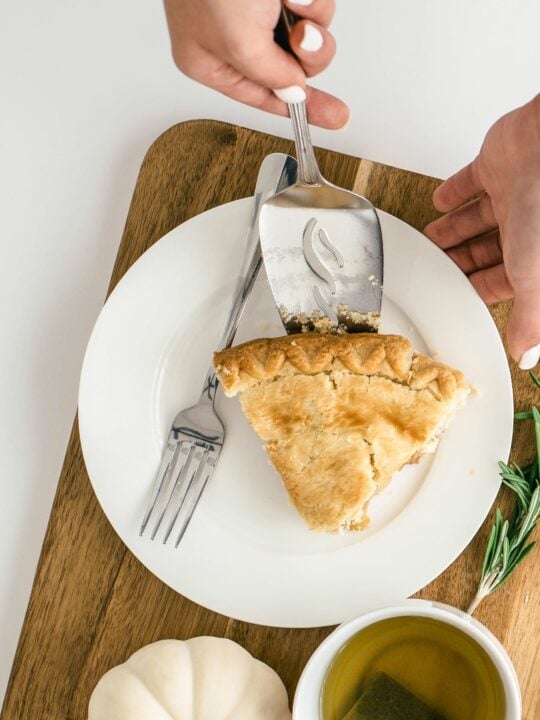
Here are a few things to consider when choosing the best pans for your gluten-free kitchen:
- First, ensure the material of the pan doesn't absorb moisture. It is especially important if you're using a recipe for oil or butter in the dough or batter. Pans made of stainless steel won't absorb moisture like other materials, so they're ideal for gluten-free baking.
- Another feature to look for in the best pans for gluten-free baking is a non-stick surface. It will help to prevent your baked goods from sticking to the pan and making a mess. Aluminum is popular for baking because it heats evenly and doesn't rust. But pans with a silicone or Teflon coating are typically best for this purpose.
- Make sure the pan you choose is the right size for your recipe. For example, baking a large batch of cookies requires a larger pan than just making a few cupcakes. The same goes for bread and cakes - Choose a pan that's big enough to accommodate the amount of batter or dough you'll be using.
- Gluten-free baked goods tend to spread more than wheat-based ones. You’ll want to use pans with straight sides that aren’t too shallow. Cake pans, muffin tins, and loaf pans are good choices.
- When thinking about the shape – a square or rectangular pan will give you more consistent results, while a round or bundt pan will create more variation.
Best models of pans for GF cooking
When it comes to gluten-free baking, one size does not fit all.
There are many different flour blends, and each one behaves differently. That's why it's important to experiment with varying pans until you find the one that works best for your specific recipe.
In general, metal pans will conduct heat more quickly than glass or ceramic, so they're a good choice if you're looking for a crispy crust.
If you want a softer crust, go with a pan made of glass or ceramic. And if you're making a cake or quick bread, any pan will work as long as it's the right size.
As you now know all features of the pan, it will be easier to choose the best one.
With those criteria in mind, let's look at some of the best pans for gluten-free baking.
Loaf pan
The loaf pan is one of the most versatile pans in the kitchen. You can use it for everything from baking bread to roasting vegetables.
When it comes to gluten-free baking, the loaf pan is an essential tool.

Here are a few things to remember when choosing a gluten free bread pan:
- Make sure that the pan has non-stick material like this one. It will help to prevent sticking and make cleanup a breeze.
- Choose a spacious pan to allow your bread to rise without crowding.
- Consider investing in a pan with a removable bottom. This feature will make it easier to release the bread from the pan and prevent it from sticking.
Square pan
The square pan is also versatile for all baking pans.

You can cook everything from cakes and brownies to casseroles and lasagna.
- A square pan is handy for savory dishes like roasted vegetables or gratins.
- If you have a fitted lid, it can double as a storage container for leftovers.
- It has a non-stick surface, making it easy to release the cake from the pan.
- It is also oven-safe for baking at high temperatures.
Most square pans are either eight or nine inches wide. But we recommend you choose an eight-inch pan like this one by Wilton because it's the perfect size for gluten free brownies and bar cookies like these gluten free lemon lime bars.
It's also big enough to accommodate a double-layer cake but not so large that your baked goods will get lost in the pan.
If you invest in one pan, make it a square pan.
8-inch pan for cake
For a layer cake, you'll need an eight-inch pan.
The most important thing to look for in an eight-inch pan is that it has straight sides. This will help your cake to rise evenly and prevent it from sinking in the middle.
You can use a round or square pan for this recipe, but a square pan (like the one above) gives you nice clean edges when you cut the cake into pieces.
If you're unsure what size pan to use, err on the side of using a smaller rather than a larger one.

A smaller cake will cook more quickly and evenly than a larger one, so it's less likely to end up overcooked or dry.
Also, gluten-free cakes are denser than traditional ones, so they don't need as much volume in the pan.
Cupcake pan
The first and most important tip regarding gluten-free baking is to invest in a good cupcake pan. It will ensure that your cupcakes are the perfect size and shape and that they bake evenly.
Besides, you want to ensure the pan has enough room for the batter to rise without overflowing.
There are a few different types of cupcake pans on the market, so you'll need to decide which one is right for you:
Wilton Round Cake Pan
You can't go wrong with the Wilton Round Cake Pan if you’re looking for a basic cupcake pan.
This durable aluminum pan has a non-stick coating that will prevent your cupcakes from sticking to the pan. It's also dishwasher safe so clean-up will be a breeze.

Find this cake pan on Amazon here.
Nordic Ware Platinum Bundtlette Pan
You may consider the Nordic Ware Platinum Collection Bundtlette Pan for something a little fancier than your traditional cupcake.
This heavy-duty aluminum pan has a non-stick coating infused with platinum. It will ensure that your mini-cakes release easily and have a beautiful golden color.

You can also get mini cake molds in holiday and seasonal styles like trains or gingerbread men.
See more from the Nordic Ware Platinum Collection here.
USA Pan Bakeware
If you're looking for a cupcake pan that can do it all, you'll want to check out the USA Pan Bakeware Cupcake and Muffin Pan. This pan has aluminized steel, and a non-stick coating reinforced with silicone.
It's also oven safe up to 450 degrees Fahrenheit, so you can also use it for baking other treats.

Find this pan on Amazon here.
Half-sheet pan for gluten-free baking
A half-sheet pan is a flat baking sheet with raised sides for the uninitiated. It's the perfect size for most home ovens and can accommodate various gluten-free recipes. When it comes to gluten-free baking, a half-sheet pan is an essential tool.
There are a few things to remember when choosing a half-sheet pan for gluten-free baking.
- Avoid carbon steel or cast iron pans, which can cause baked goods to stick and become difficult to remove.
- Choose a pan with smooth sides to prevent sticking and ensure even browning.
- Make sure the pan is large enough to accommodate the recipe you're using.
Here are our picks for the best half-sheet pans for gluten-free baking:
Nordic Ware Naturals
The Nordic Ware Natural Aluminum Commercial Baker's half sheet is my top pick because it is pure aluminum that won't interact with your food.
It also has a smooth surface and is large enough to accommodate most recipes.

Find Nordic Ware Natural Aluminum Commercial Baker's Half Sheet on Amazon here.
USA Pan Bakeware Half Sheet Pan
The USA Pan Bakeware Half Sheet Pan is another great option because aluminized steel provides even heat distribution. It also has a non-stick coating that helps prevent sticking.

Find these half sheet pans by USA Pan Bakeware here.
Pie plate for gluten-free pie
The first step in creating a great gluten-free pie is to start with the right pan.
A good pie plate should be deep enough to accommodate the filling without overflowing and have a flared rim to help support the dough.
There are many materials for pie plates, but we recommend using one made of glass or ceramic. These materials will help evenly distribute heat, resulting in a more consistent bake.
We recommend the Pyrex Deep Pie Plate if you want a specific model. This pan has high-quality tempered glass and a particular design to withstand high temperatures.

You can also wash it in the dishwasher, so it won't take long to clean.
Find 9.5 inch deep Pyrex Glass Pie Baking Dishes on Amazon here.
8 Tips on how to avoid problems in gluten-free baking
When it comes to baking gluten-free, there are a few things you need to keep in mind to avoid any issues. Check out my ultimate guide to gluten free baking, or keep reading for some of the basics!
1. Make sure that your ingredients are all gluten-free.
It means checking the labels on everything from the flour to the baking powder to the chocolate chips.
Want to know more about gluten free labeling and certification? Check out this guide.
2. Avoid cross contact (some call it cross-contamination)
This means keeping your gluten-free ingredients and utensils separate from anything that contains gluten.
If you're using a shared kitchen, this can be tricky, but it's important to do your best to avoid any cross-contamination. You can learn more about how to prevent cross contact in your kitchen here.
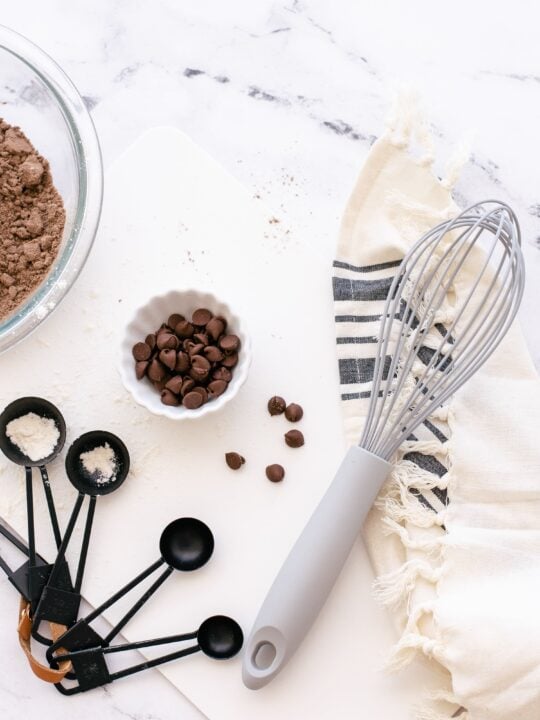
3. Remember: gluten-free flours behave differently than wheat flour
So, don't try to substitute single flours 1:1 when changing your recipe to be gluten free.
Keep reading for tips on how to blend gluten free flours, or try a an already mixed all-purpose gluten free flour like my favorite one by King Arthur.

4. Ensure your ingredients are at room temperature before starting.
This will help them blend more easily and produce a more consistent final product.
Room temperature ingredients are also less likely to stick to your pans, so that’s another plus.
5. Stick to the recipe
When starting with gluten-free baking, it's best to stick to tried-and-true recipes like the ones here on The Helpful GF! They are all double tested to ensure they turn out great.
Once you have a few successful gluten-free baked goods, you can begin experimenting with substitutions and additions. But in the beginning, it's better to play it safe.
6. Don’t neglect starch
Gluten-free baking often gets a bad rap for being dry, crumbly, and generally not as good as the “real” thing.
But with the right ingredients and techniques, you can make gluten-free baked goods that are moist, tender, and delicious.
One key ingredient in many gluten-free recipes is starch.
Starches help to absorb moisture and add structure to gluten-free baked goods. They also add tenderness and help with browning.
Common starches in gluten-free baking include tapioca, potato, arrowroot, cornstarch, and rice flour. There are a few things to keep in mind when using it in gluten-free baking:
- Make sure to add enough moisture to your recipes. Starches can absorb much water, so it’s important to compensate by adding extra liquid.
- Don’t overmix your batter or dough. Overmixing can lead to tough, rubbery baked goods.
- If you’re new to gluten-free baking, using a premixed gluten-free flour blend that already contains starch can be helpful. That way, you can be sure that your baked goods will turn out well.
7. Mix different gluten-free flours
When it comes to gluten-free baking, one flour does not fit all.
The best way to achieve desired results is to mix different gluten-free flour. It will help you create the perfect texture and flavor for your baked goods.
There are a few things to keep in mind when mixing gluten-free flours:
- The ratio of flours will depend on the recipe you are using.
- Some flours work better together than others. For example, brown rice flour and tapioca flour create a light and airy texture, while buckwheat flour and almond meal produce a heartier result.
- Experiment until you find the combination that works best for you.
8. Don’t swap out the eggs
Eggs are essential in gluten-free baking. They provide structure and stability to cakes, cookies, and quick bread.
When you are already modifying a traditional recipe to be gluten free don’t add eggs, the texture of the baked goods will be dense and gummy.
If you’re looking for a vegan or egg-free option, use recipes specifically created to be gluten free and vegan.
What's they key to loving your gluten free life? Get your personalized plan with the guide you need to thrive!

Summary
No matter what you're baking, the quality of your ingredients is important.
But when it comes to gluten-free baking, the quality of your tools can be just as important. The wrong pan can make all the difference between a light and fluffy cake or a dense and crumbly one.
In this article, we've shared our top picks for the best pans for gluten-free baking, as well as some tips and tricks to help you succeed in your baking endeavors.
So whether you're a beginner baker or a seasoned pro, we hope this article was a helpful resource in your quest to create delicious gluten-free baked goods.
If you found this article to be a helpful guide, please share it on social media or pin it to Pinterest for later using the social sharing buttons!
Looking for more posts on gluten free baking?
- Best flours for gluten free baking
- Anti-inflammatory grocery list
- How to save money eating gluten free
Check out the ByRossi website for reviews of the best hot tub and pool models. Plus, maintenance and service information for your home devices.


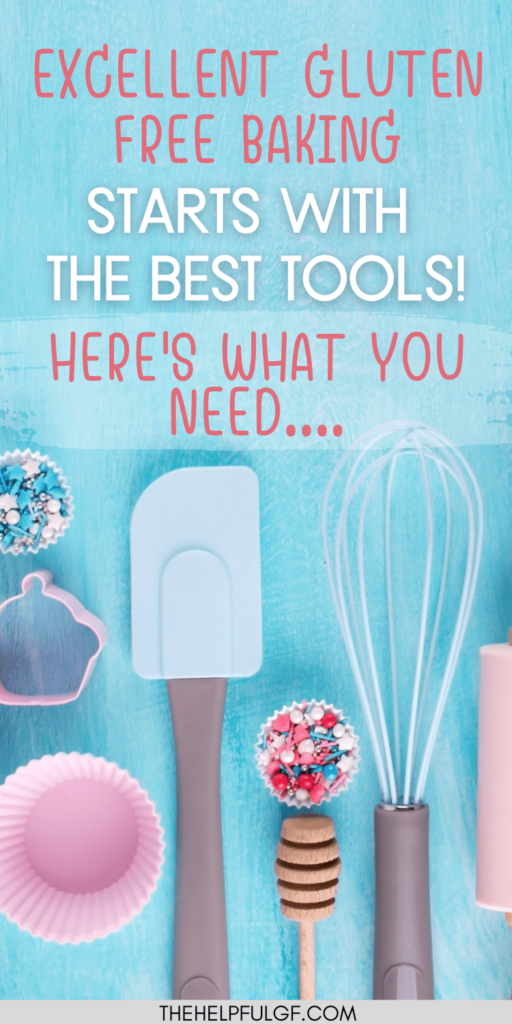
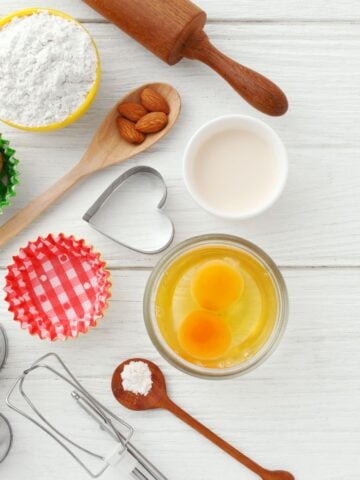


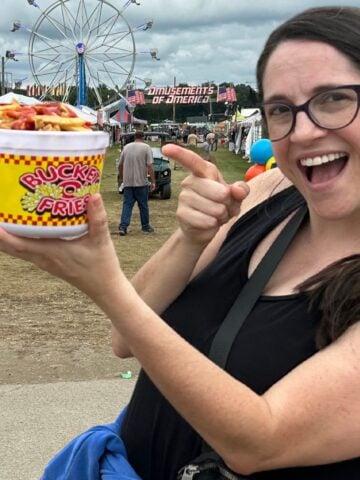
Leave a Reply